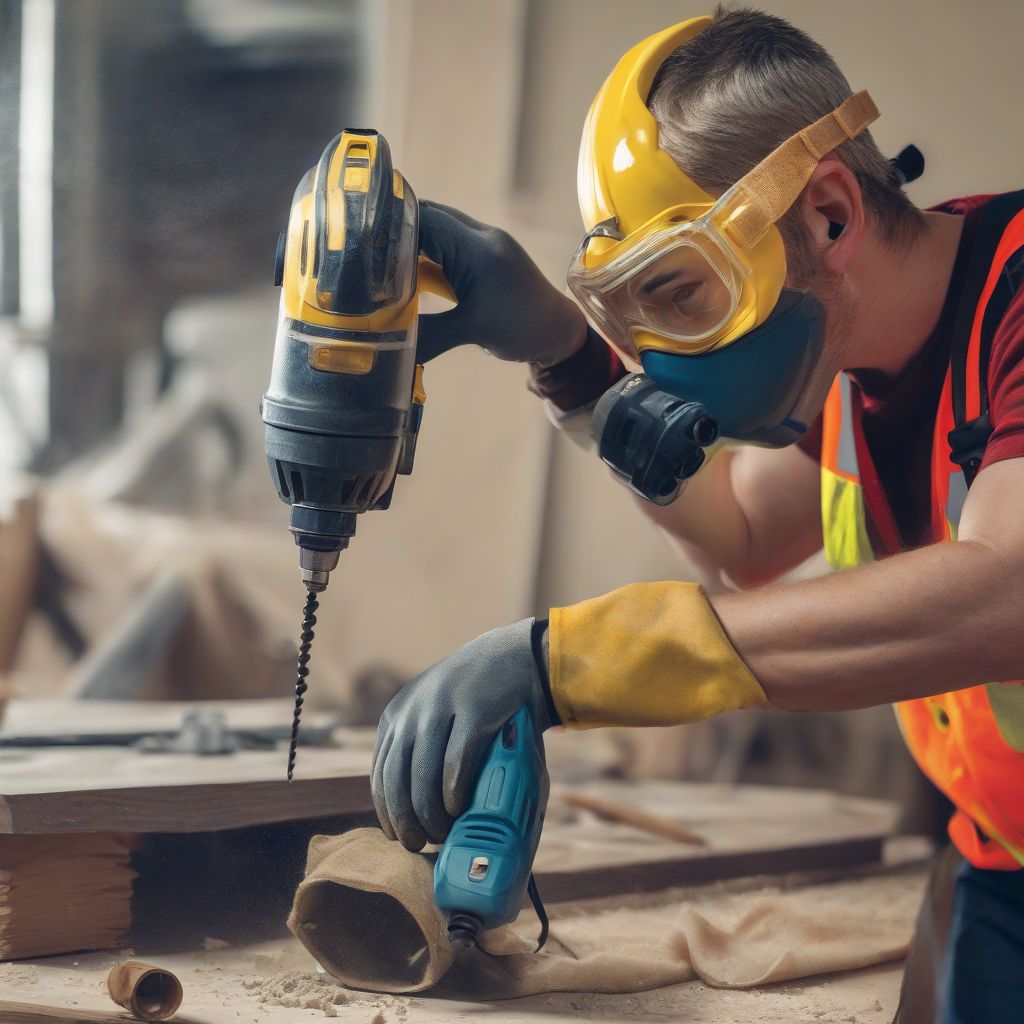Have you ever dreamt of crafting intricate woodworking masterpieces or tackling complex home renovations with the finesse of a seasoned pro? Power tools can transform your DIY dreams into reality, but they demand respect. Mastering their safe operation is paramount before embarking on advanced projects. This guide provides a comprehensive roadmap to using power tools safely, empowering you to confidently elevate your DIY skills.
Understanding the Risks: Why Safety Matters
Before we delve into specifics, let’s address the elephant in the room: power tools can be dangerous if mishandled. From minor cuts to serious injuries, the risks are real. As a nutritionist, I understand the importance of preventative care. Just as you prioritize a healthy diet to avoid future health problems, prioritizing safety prevents workshop mishaps. “An ounce of prevention is worth a pound of cure,” Benjamin Franklin wisely said, and this couldn’t be truer when working with power tools.
Essential Safety Gear: Your First Line of Defense
Think of safety gear as your personal protective equipment (PPE). It’s your armor against potential hazards. Before even plugging in a tool, equip yourself with:
Eye Protection: Shielding Your Sight
Safety glasses or goggles are non-negotiable. They protect your eyes from flying debris, sparks, and even chemical splashes. Don’t skimp on this – your vision is invaluable.
Hearing Protection: Preserving Your Hearing
Many power tools operate at noise levels that can damage hearing over time. Invest in earplugs or earmuffs, especially for prolonged use.
Respiratory Protection: Breathing Easy
When working with materials that generate dust or fumes, a respirator is crucial. Choose the appropriate type based on the specific hazards.
Hand Protection: A Firm Grip, Safely
Gloves provide a protective barrier against cuts, splinters, and vibrations. Select gloves suitable for the task at hand, ensuring a secure grip.
Clothing and Footwear: Dressing for Safety
Loose clothing and jewelry are hazards waiting to happen. Opt for snug-fitting attire and sturdy, closed-toe shoes. Steel-toed boots offer additional protection against dropped objects.
 Power Tool Safety Gear
Power Tool Safety Gear
Power Tool Fundamentals: The Basics of Safe Operation
Regardless of the specific tool, some fundamental safety principles apply universally:
Read the Manual: Knowledge is Power
Before using any power tool, thoroughly read the manufacturer’s instructions. Familiarize yourself with its operation, safety features, and recommended maintenance.
Inspect Your Tools: A Pre-Use Check
Before each use, inspect your tools for damage. Check cords for fraying, ensure blades are sharp and secure, and confirm all safety guards are in place.
Secure Your Workpiece: Stability is Key
Clamps and vises are your best friends. A stable workpiece is crucial for precise cuts and prevents dangerous kickback. Think of it like prepping your ingredients before cooking – a well-organized workspace is a safer workspace.
Disconnect Power: When Not in Use
Always unplug the tool before changing blades, making adjustments, or clearing jams. This simple step can prevent countless accidents.
Maintain Your Tools: Prolonging Lifespan and Safety
Regular maintenance keeps your tools in optimal condition, ensuring both safety and longevity. Follow the manufacturer’s recommendations for cleaning, lubrication, and part replacement.
Advanced DIY Techniques: Safe Practices for Specific Tools
Now, let’s dive into specific safety considerations for some commonly used power tools in advanced DIY projects:
Circular Saws: Mastering the Blade
When using a circular saw, always use a sharp blade and ensure the blade guard is functioning correctly. Support the workpiece firmly and use a guide for straight cuts. Remember, a dull blade requires more force, increasing the risk of kickback.
Table Saws: The King of the Workshop
Table saws are incredibly powerful and require utmost caution. Use push sticks and featherboards to keep your hands away from the blade. Never reach over the blade while it’s running.
Routers: Shaping with Precision
Routers are versatile tools for shaping wood. Always use sharp bits and secure the workpiece firmly. Keep your fingers clear of the rotating bit and use a router table whenever possible.
Angle Grinders: Cutting and Grinding with Power
Angle grinders generate significant heat and sparks. Wear appropriate eye and face protection and always use the correct grinding wheel or cutting disc for the material.
Power Drills: Driving Force in DIY
When using a power drill, ensure the drill bit is sharp and securely fastened in the chuck. Use the appropriate speed setting for the material and always drill pilot holes when necessary.
Emergency Procedures: Being Prepared
Despite your best efforts, accidents can happen. Knowing how to respond in an emergency is crucial:
First Aid: Basic Care
Have a well-stocked first aid kit readily available and know how to administer basic first aid for cuts, burns, and other minor injuries.
Emergency Contacts: Seeking Help
Keep emergency contact numbers readily accessible. In case of a serious injury, call for professional medical assistance immediately.
Continuous Learning: Staying Sharp
The world of DIY is constantly evolving. Stay updated on the latest safety practices and techniques by attending workshops, reading industry publications, and connecting with other DIY enthusiasts. Remember, a skilled craftsman is a safe craftsman.
 Advanced DIY Project with Power Tools
Advanced DIY Project with Power Tools
Conclusion: Empowering Your DIY Journey Safely
Mastering power tools opens up a world of possibilities for advanced DIY projects. By prioritizing safety and following these guidelines, you can confidently tackle complex tasks while minimizing risks. Remember, safety is not just a set of rules; it’s a mindset. Embrace it, and you’ll be well-equipped to bring your DIY visions to life. Share your own safety tips in the comments below and let’s build a safer DIY community together. What projects are you planning to tackle with your newfound power tool prowess?



